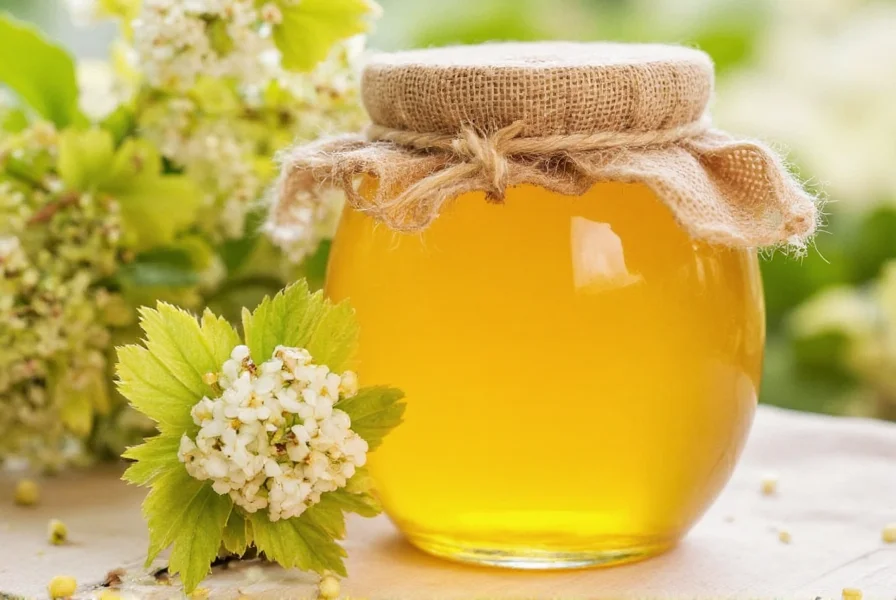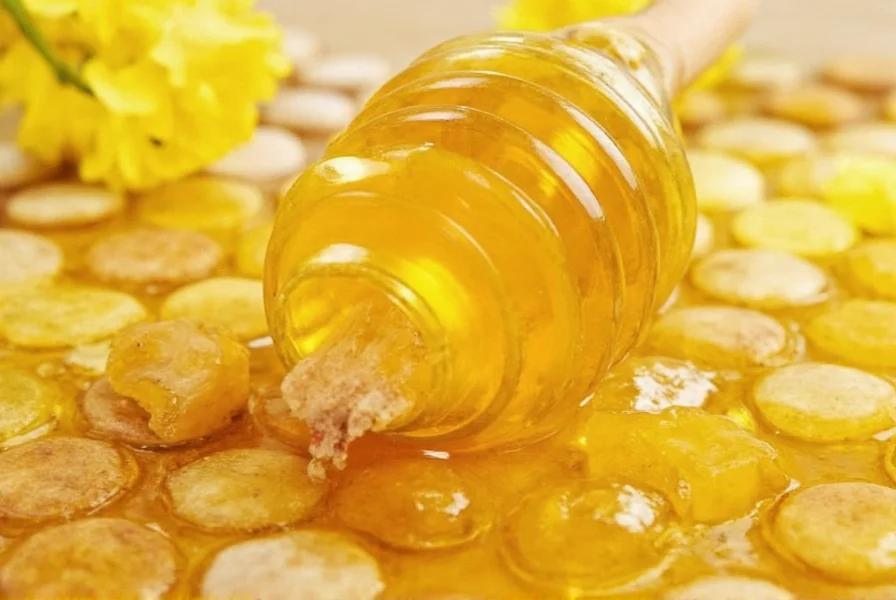Clover honey represents one of the most popular honey varieties in supermarkets across the United States and Canada. Beekeepers strategically place hives in clover-rich fields during blooming season, typically from late spring through summer, allowing honeybees to collect nectar that results in this distinctive product. The specific characteristics of clover honey can vary based on geographic location, soil conditions, and the particular clover species predominant in the area.
Characteristics of Clover Honey
What sets clover honey apart from other varieties begins with its visual appearance. Freshly harvested clover honey typically displays a pale golden to light amber color, though it may appear nearly water-white when first extracted. Over time, it naturally crystallizes into a fine, creamy consistency that many consumers prefer for spreading.
The flavor profile of clover honey features a delicate floral sweetness with subtle grassy notes and minimal aftertaste. Its mild character makes it an excellent choice for those new to raw honey or preferring less intense flavors compared to darker varieties like buckwheat honey. With a moisture content typically between 17-18%, quality clover honey maintains a smooth, pourable texture when liquid.

Production Process of Clover Honey
Clover honey production begins when honeybees visit clover blossoms, collecting nectar using their proboscis. The bees store this nectar in their honey stomachs, where enzymes begin breaking down complex sugars into simpler ones. Upon returning to the hive, worker bees transfer the nectar to honeycomb cells and fan their wings to evaporate excess moisture.
Beekeepers harvest clover honey when the moisture content reaches optimal levels, usually around late summer. The honey extraction process involves removing wax cappings from honeycomb frames, then spinning the frames in an extractor to separate honey from the comb. Unlike some specialty honeys, most commercial clover honey undergoes gentle filtration to remove wax particles while preserving natural enzymes and pollen.
Clover Honey Varietal Comparison
| Honey Variety | Color | Flavor Profile | Crystallization Rate | Primary Floral Source |
|---|---|---|---|---|
| Clover | Light Amber | Mild, floral, balanced sweetness | Moderate (6-12 months) | White clover, alsike clover |
| Wildflower | Amber to Dark | Variable, often robust | Variable | Mixed floral sources |
| Manuka | Dark Amber | Earthy, medicinal | Slow | Manuka tree |
| Orange Blossom | Light | Citrusy, fragrant | Rapid | Orange tree blossoms |
Nutritional Composition and Potential Benefits
A single tablespoon (21g) of clover honey contains approximately 60 calories and 17 grams of carbohydrates, primarily from natural sugars like fructose and glucose. Unlike processed sugars, clover honey contains trace amounts of vitamins, minerals, and antioxidants including flavonoids and phenolic acids.
While all honey varieties share certain properties, research suggests that lighter honeys like clover contain different antioxidant profiles compared to darker varieties. A study published in the Journal of Agricultural and Food Chemistry found that lighter honeys tend to have higher levels of certain phenolic compounds that contribute to their antioxidant capacity.
Selecting Quality Clover Honey
When purchasing clover honey, look for products labeled as "pure" or "100% pure" without added sweeteners like corn syrup. The National Honey Board recommends checking for the USDA organic seal if organic certification matters to you, though this doesn't necessarily indicate superior flavor.
Real clover honey will crystallize over time—a natural process indicating purity. Avoid products that remain perfectly liquid for years, as they may contain added sugars or have been excessively processed. The ideal storage temperature for maintaining clover honey's quality ranges between 50-70°F (10-21°C).
Practical Applications in Daily Life
Clover honey's mild flavor makes it exceptionally versatile in the kitchen. It serves as an excellent sweetener for tea, yogurt, and cereal without overpowering other flavors. In baking, substitute clover honey for sugar at a 3/4 cup honey to 1 cup sugar ratio, reducing liquid ingredients by 1/4 cup per cup of honey used.
Many home cooks appreciate clover honey as a base for salad dressings and marinades, where its balanced sweetness complements vinegar and citrus notes. For those exploring natural wellness approaches, a teaspoon of raw clover honey may soothe occasional throat irritation when taken before bed, though it should never replace medical treatment for persistent symptoms.
Frequently Asked Questions
Is clover honey raw or processed?
Clover honey can be found in both raw and processed forms. Raw clover honey undergoes minimal processing—typically just straining to remove large particles—while preserving natural enzymes and pollen. Commercial clover honey often receives gentle filtration and pasteurization to delay crystallization and ensure consistent texture.
How long does clover honey last before expiring?
Properly stored clover honey remains safe to consume indefinitely due to its natural preservative qualities. The National Honey Board recommends a "best by" date of 2 years for quality purposes, but honey stored in airtight containers away from moisture and direct sunlight maintains edible quality for decades. Crystallization is a natural process that doesn't indicate spoilage.
What makes clover honey different from wildflower honey?
Clover honey comes primarily from specific clover species, resulting in consistent flavor and color characteristics. Wildflower honey derives from multiple unidentified floral sources, creating more variable flavor profiles that change with seasons and locations. Clover honey typically has a lighter color and milder taste compared to many wildflower varieties.
Can people with pollen allergies safely consume clover honey?
Most people with seasonal pollen allergies can safely consume clover honey. The pollen in honey comes from flower nectar collected by bees, which differs from the wind-pollinated plants that typically cause seasonal allergies. However, individuals with severe bee product allergies should consult their healthcare provider before consuming any honey.
Why does my clover honey crystallize so quickly?
Clover honey naturally crystallizes due to its glucose content, typically forming fine crystals within 6-12 months. This process indicates purity, as processed honeys with added sugars resist crystallization. To return crystallized honey to liquid form, place the container in warm water (below 110°F/43°C) without boiling, which preserves beneficial compounds that high heat would destroy.











 浙公网安备
33010002000092号
浙公网安备
33010002000092号 浙B2-20120091-4
浙B2-20120091-4